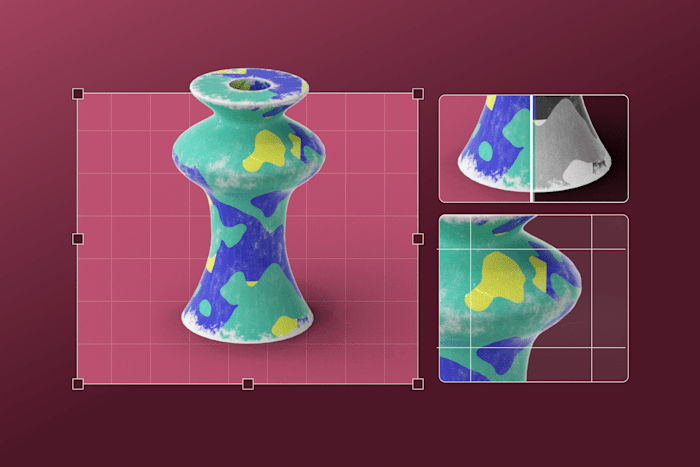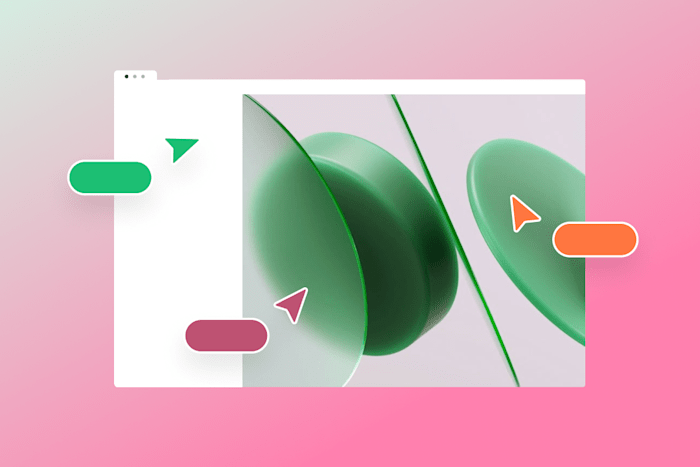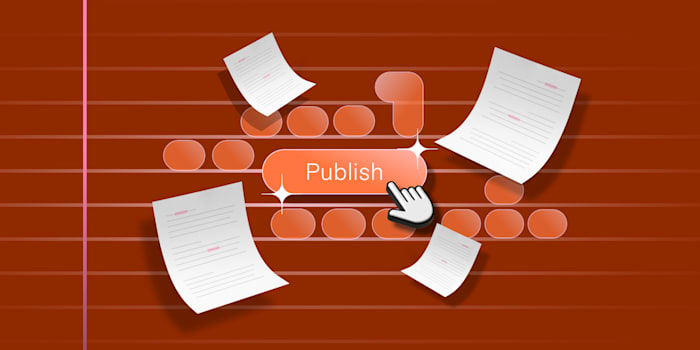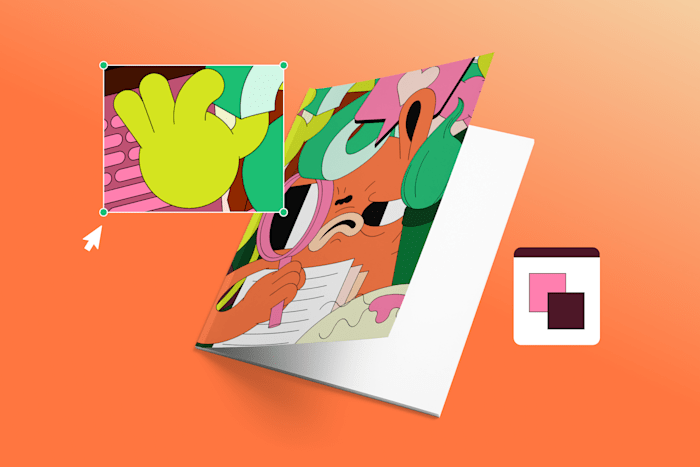How to Create a Storyboard: A Guide for Films, Animations, and Marketing
Master the art of storyboarding with our comprehensive guide to planning visual narratives for any creative project.
 June 4, 2025
June 4, 2025 9 minute reading
9 minute reading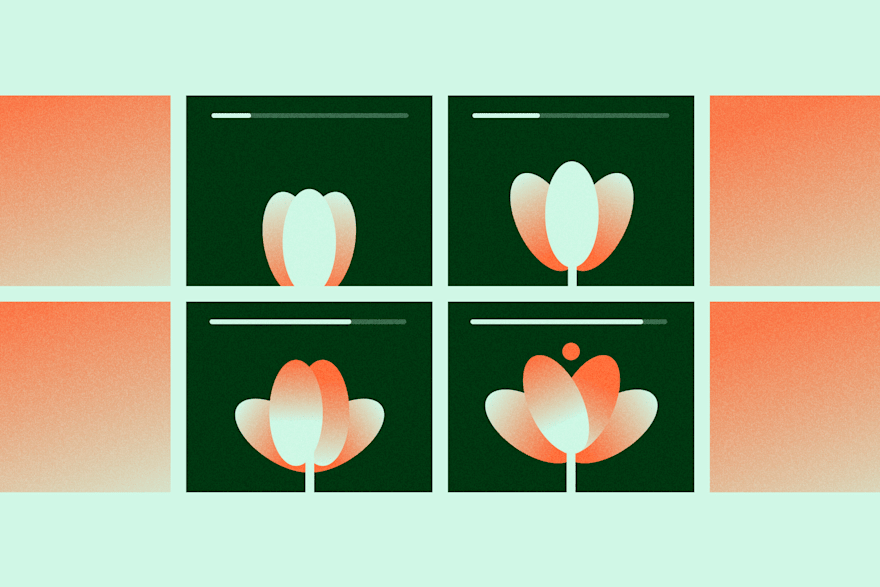
When you have an idea for a creative project, a storyboard will bring it to life. By using visuals, you can break down each scene and make changes as required.
More than 72% of filmmakers use detailed storyboards, while 31% work with designers to create the perfect sequence of events. Whether it’s for a film, advertisement, music video, or animation, a storyboard is often part of the planning process and keeps everyone on the same page.
If you’re considering using a storyboard for your next project, you’ve come to the right place. In this guide, you’ll learn about how to create one, the different types, and how a storyboard illustrator can make the process easy.
What is a storyboard?
A storyboard is a series of images that break down a story into different parts or scenes. Each key moment is illustrated in a panel and may include written notes to signal speech, lighting, and music.
Storyboards can be digital or hand-drawn, depending on the artist’s preference. The script or outline usually comes first, giving the designer something to work with.
Here is an ex from Walt Disney:
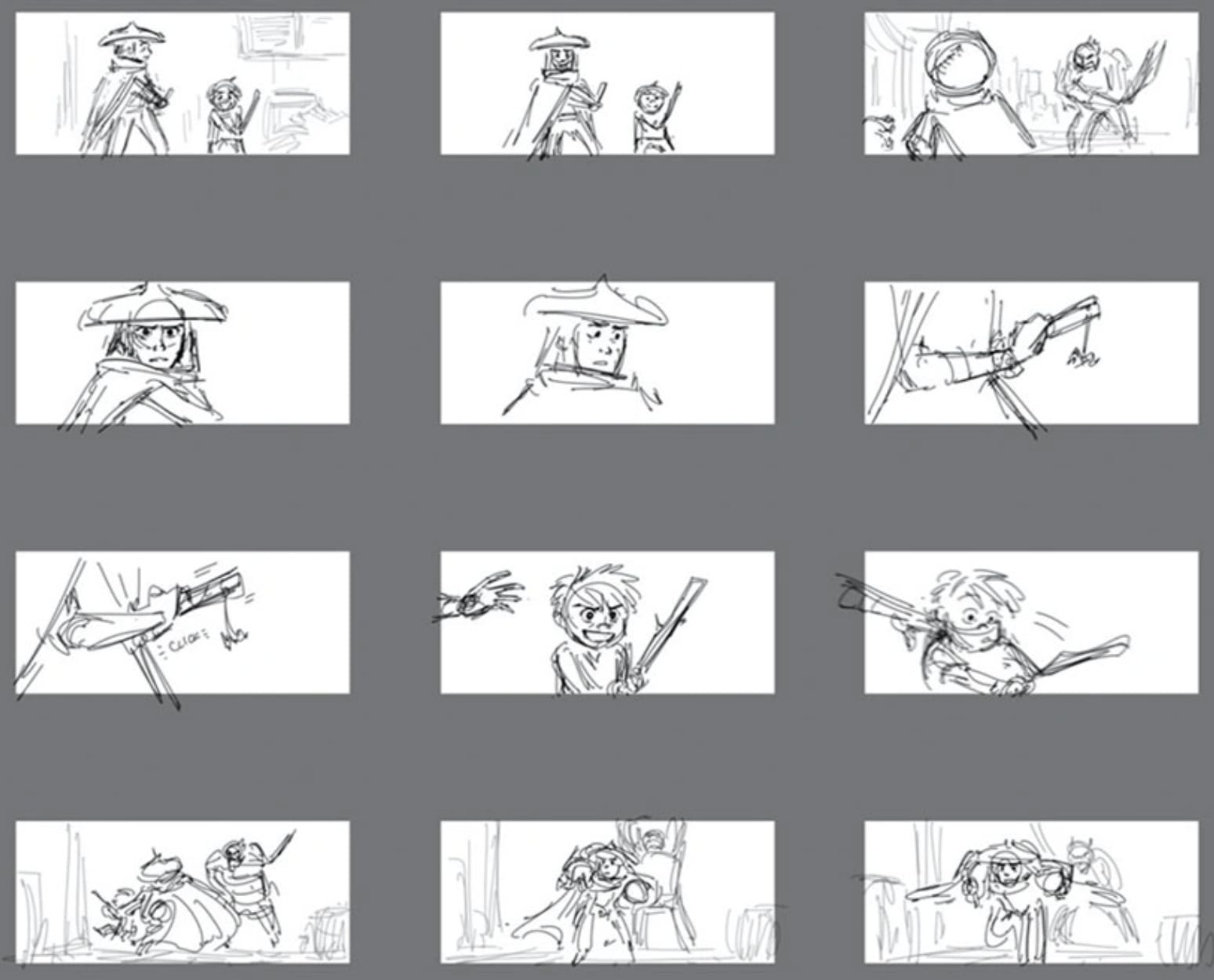
Disney
Even if you don’t have Disney’s budget or have a dream of creating a full-length movie, storyboards can still be beneficial.
This process can be used when creating a range of materials, including social media videos and website content.
How to create a storyboard
Ready to get started? Here is a step-by-step guide for creating your first storyboard.
1. Define your project requirements
Before you put pen to paper, you need to decide what you are creating and define any goals. For ex, is it a short film, advertisement, or informational YouTube video?
During the planning phase, you should consider:
Your target audience
The length of the video
The theme and genre of the story
The style of the content (animation or actors)
The number of characters
Where the content will be viewed
Who will be working with you on the production?
Think about the reason behind the project and the type of message you want to share. Is the purpose for people to buy something, feel inspired, be entertained, or learn a new skill?
Once you have your requirements ready, you can start working on the content.
Find a storyboard designer for hire
2. Create your story
Step two is all about your story. What you choose to include will depend on the motivation behind your project, and you may already have something written down. Consider the key points that are essential and build your script around them. For ex, if it’s a marketing video, it may need a statistic or call to action.
A good story has a plot, and usually comes with a beginning (introduction), middle (conflict), and end (resolution). Whether your video is 30 seconds or 3 hours long, it needs to be engaging to the viewer.
You’ll also need to know who the main characters or voices are, the setting, and the target audience. Use this information to create a script, and make notes about potential music, sound effects, and lighting.
It’s important to get the story right first. If you need help putting everything together, you can get scriptwriting services on Fiverr.
3. Plan your shots
Next, you should break your story down into different shots. Often creators will use a shot list, with brief written descriptions of what will happen in each scene.
Use a table to create a rough draft, including:
The shot number, such as #Shot 1 or #Shot 2
The characters and their actions
The backdrop, including scenery and props
Camera angles, shot type, and required equipment
Length of the scene
Any important notes
The shot list is a good foundation for your storyboard, and artists often rely on it to create their illustrations. If you are considering hiring a creator, this is an important step.
We asked Fiverr Pro storyboard artist Steph Skiles how she decides what should go into a storyboard.
She says, “There are so many factors to this, and it really can vary from order to order. I always make sure to check in with my clients on the style of production that they're going for. What, if anything, has inspired them while creating the project?
What are their preferences for camera movements, shot types and presentation? If it's a more creative project — what do they want the viewer to feel? Beyond that, if I'm operating without a shot list, it's really about two things:
What's important in the part of the script or outline that you're storyboarding? This can be anything from an actor, to an object, to a feeling. And, what's important to the client when it comes to the project?
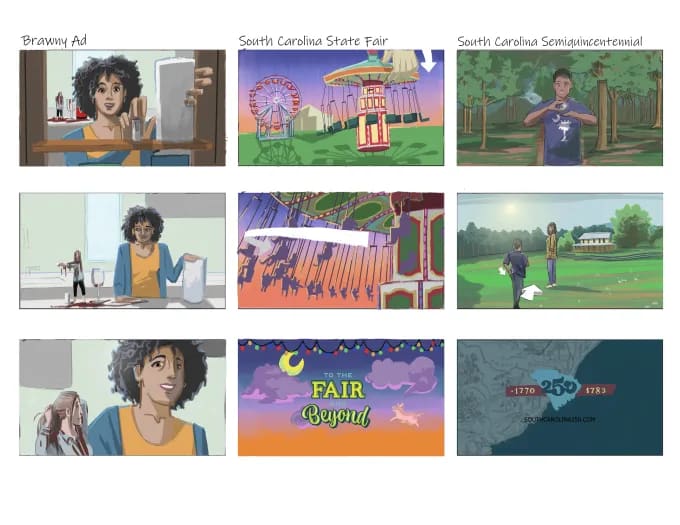
Storyboard by Steph Skiles
All of these things mixed with a solid script, outline or information, listening to the client and considering their needs and opinions, I find, usually make for a pretty great storyboard.”
4. Prepare your materials
Now that you know exactly what will go into the storyboard, it’s time to prepare your materials. If you have basic design skills, you may prefer to use software to create your storyboard.
There are a range of free and paid storyboarding tools to choose from, including:
Alternatively, you can hand-draw each frame on paper and pin them on a poster board. Whichever option you choose, make sure you can edit and move your scenes around if you need to.
Storyboards can be shaded in black and white, or you can use full color. Remember, the goal is to show the look and feel of each scene, so the images need to be as clear as possible.
Find Expert Graphic Designers for Hire
5. Sketch your frames
Next, you can create a box for each scene, with around 15-20 shots per 60 seconds. If you already have a short list, you will know how many frames you need, and you can label them in numerical order. Make sure you leave space under each panel for any important notes.
When it’s time to start drawing, rough sketches are a good starting point. You can even use stick figures to work out the positioning before adding extra detail.
If there is dialogue, you can signal this with an empty speech bubble. And, where there is movement, you can add arrows or action lines to show the direction.
Here is a storyboard example from StudioBinder. It shows how you can flag different movements and emotions in your shots:

StudioBinder
Think about how each character would be acting and feeling in that moment, focusing on body language and facial expressions.
This part of the process can be tricky. If you need extra support, consider hiring a Fiverr freelancer to turn your sketches into more detailed images.
6. Add technical notes and descriptions
By now you should have defined your video project, written a script, and finalized your storyboard illustrations.
But, you aren’t done just yet. When you first planned your shots, you may have considered the technical details, such as camera angles, equipment, special effects, lighting, and props. These notes need to be added to your storyboard.
If your project is animated, you may need an even greater level of detail. Everything from colors to fonts to hairstyles will need to be planned.
Your descriptions can be written underneath each panel. It may look something like this storyboard notes for a bike race video:

Katrina Axford
Why does it matter? Let’s say a team member is unfamiliar with the project and looks at it for the first time.
By looking at the images and reading the notes, they should understand exactly what will happen and when. This makes it easier to collaborate and get the best final results.
7. Review and finalize your storyboard
This is the last preproduction phase before you get out the clapperboard and scream “action.” Filming takes time and money, so use this time to double check everything is ready to go.
For ex, you should look over the script and make sure any actors are familiar with their lines. And, you can review the storyboard. Look at every shot and compare the images to the annotations to see if the story flows.
Asking other stakeholders for last-minute feedback can be beneficial, as you will have fresh eyes on the project. If a key scene is missing or the sequence of events needs to be arranged, it is better to fix it before filming starts.
Types of storyboards
Storyboards are versatile and you can use them for a range of creative projects. Here are some of the most common types:
Film and video
Whether you are creating a full-length feature film or a short episode, a good storyboard will bring everything together.
Let’s have a look at the classic franchise, Jurassic Park. Director Steven Spielberg collaborated with artist David Lowery to create these storyboard illustrations:
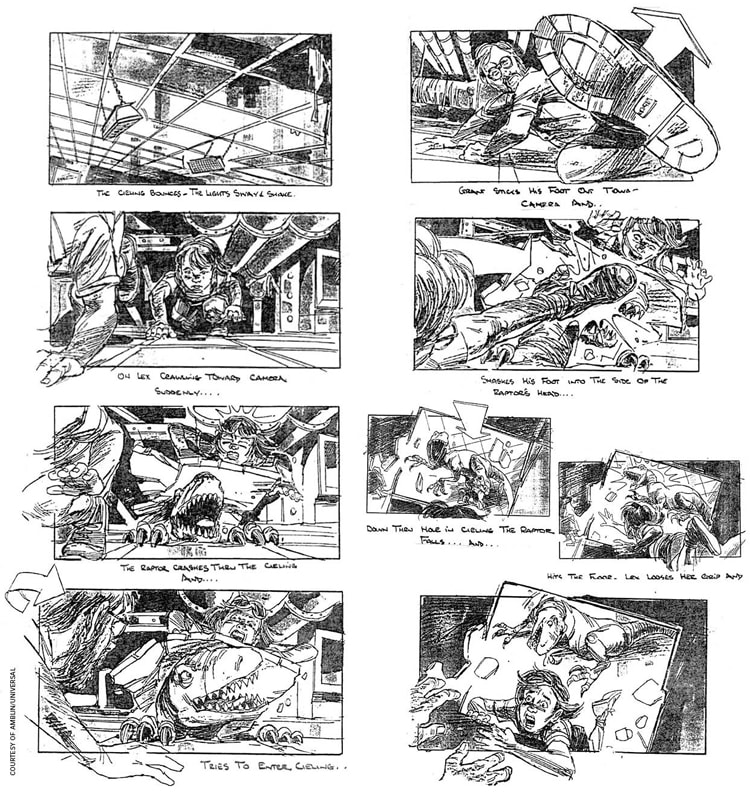
Directors Guild of America (DGA)
The detailed images are paired with short descriptions and are useful for everyone on set, including actors, camera operators, and directors.
Animation
With a clear storyboard, an animator’s job is much easier. Instead of relying on a script, they can see exactly how each scene should look.
The storyboard will be a blueprint. But, even though it’s pictures, it won’t have the same level of detail as the animated film.
Here is an ex from the Batman animated series, based on the original comic books:
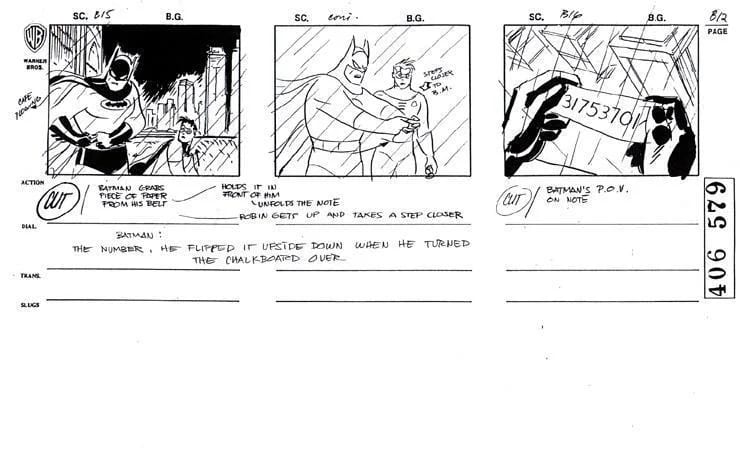
dcanimated.com
There are different types of animation, including:
Traditional animation
2D animation
3D animation
Stop-motion animation
Motion graphics
The storyboarding process can be the same regardless of the type of animation you are working with. However, animatic (images with sound) or digital storyboards are common in this industry.
Advertising and marketing
89% of business owners use video marketing to promote their brands. We asked Fiverr artist Jack R. how storyboards can be used in advertising.
He says: “Storyboards play an important role in advertising in several ways. One of the most important uses is during pre-production, where they help visualize the script before moving into full production.
This allows teams to plan shots and refine concepts, making sure there is a smooth workflow.”
Here is an ex of a storyboard Jack R created for Willy’s Mexicana Grill's campaign:
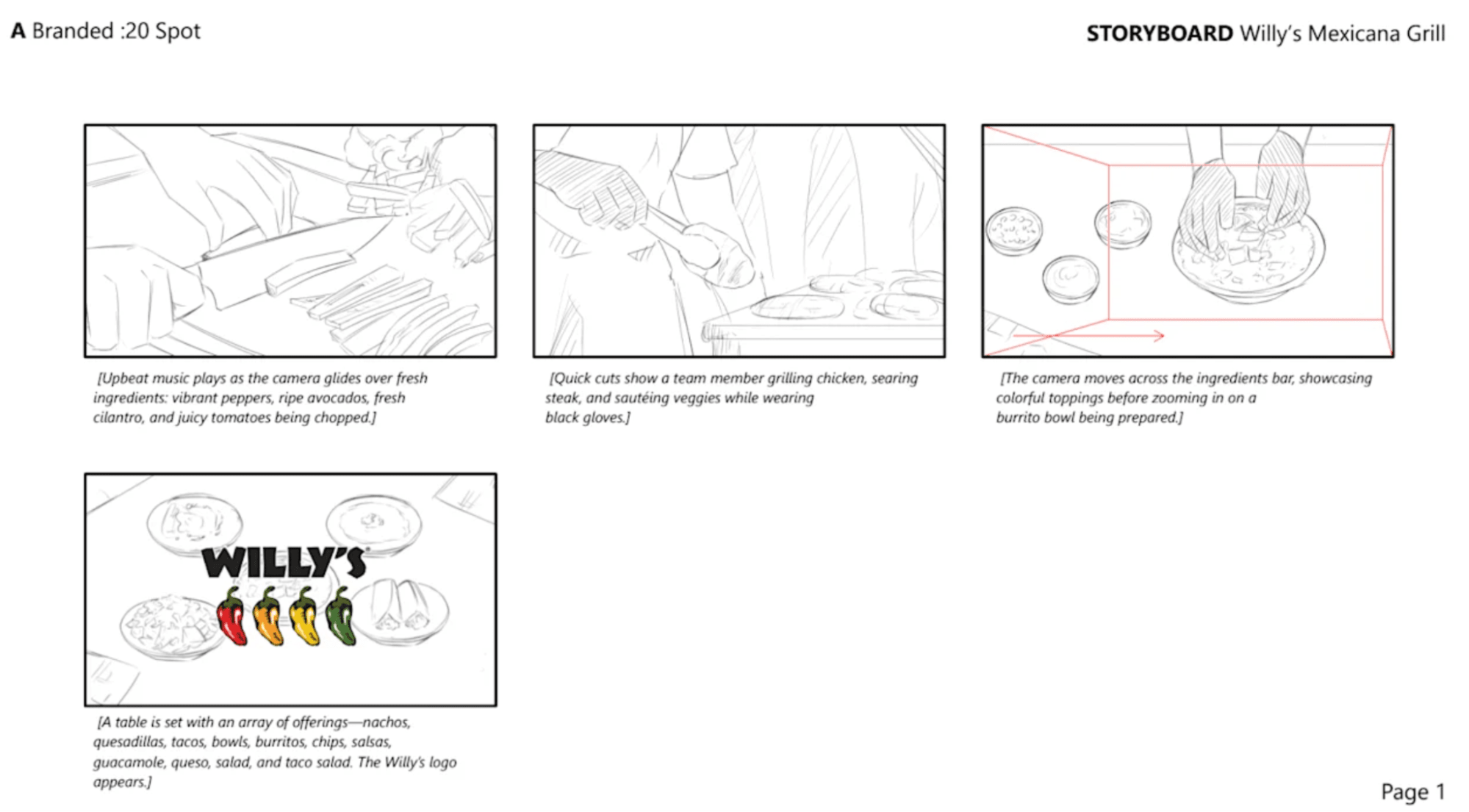
Jack R

Jack R
Jack continues, “Storyboards are also often used for pitching ideas in meetings. They provide a clear visual representation of the concept, making it easier for clients, stakeholders, or creative teams to understand and approve the direction before committing to production.”
UX/UI design
Did you know you can use storyboards for UX (User Experience) and UI (User Interface) design projects?
For example, your goal will be to improve the overall experience for the end user. A storyboard can showcase the steps different people will take to use a website, app, product, or service.
Here is how fictional Amazon shopper Emilia may use the Gov ID to verify her age in-store:

storytribeapp.com
The Amazon scenario shows how the process works from the customer’s point of view — from the time the app is downloaded to the final sale. It includes close-up and wide shots with descriptions on each slide.
If you have an ecommerce website, your own storyboard can show the steps a visitor who lands on the homepage will take as they progress through the product pages and checkout.
Hire a storyboard specialist on Fiverr today
Fiverr is your go-to for finding storyboard illustrators, graphic designers, scriptwriters, and other creators. Our platform has a convenient and safe chat feature, reviews from previous customers, and secure payment processing.
Ready to bring your vision to life? Browse talented storyboard artists on Fiverr who can turn your ideas into professional storyboards.
Create a storyboard FAQs
How do we create a storyboard?
Once you have a script, you can write down a list of the key scenes. Then, use storyboard software or paper and pencil to create boxes with an illustration for each shot.
If you need help, a storyboard designer can turn your rough draft into a work of art.
What are the 7 steps to storyboard creation?
There are 7 steps to creating a storyboard:
Define your project goals
Create your story
Plan your shots
Prepare your materials
Sketch your frames
Add technical notes
Review and finalize your storyboard
What are the 5 most important elements of a storyboard?
When creating a storyboard, you’ll need clear illustrations. Other elements to consider include shot numbers, annotations, camera angles, and dialogue.
What is the format of a storyboard?
A storyboard should have a separate panel for each shot. These will be numbered, and underneath there should be space for written descriptions.

